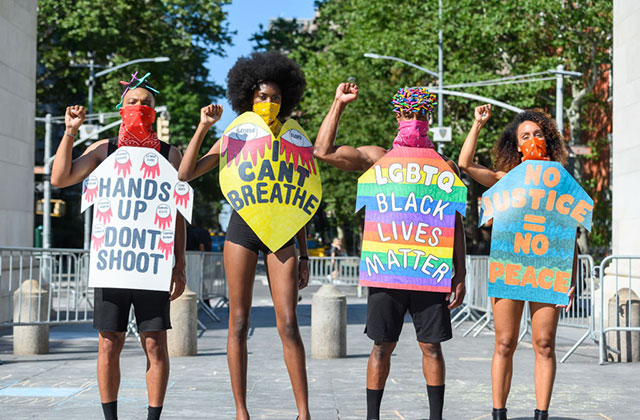Museums Want You to Help Them Document 2020’s Curve Balls

Back in May, The New York Times reported that museums had already started thinking about how to archive 2020’s pandemic. But then 2020 became even more unprecedented with circumstances that led to an economic collapse and mass protests against racism. With so much to catalogue, the nation’s historical societies are asking the public for help, according to the Times.
“I do think it’s a national reckoning project,” Anthea M. Hartig, the director of the Smithsonian’s National Museum of American History told the Times. Hartig added, there are “a multitude of ways in which we need to document and understand—and make history a service. This is one of our highest callings.”
Beginning in mid-June, the Wall Street Journal reported that curators from the National Museum of African American History and Culture (NMAAHC) went to Lafayette Square in Washington, D.C. to preserve protesters’ signs and artwork that went up around the White House following George Floyd’s death by Minneapolis police. Other arms of the Smithsonian Institution were also on the ground, including curators from the American History Museum and the Anacostia Museum, NPR reported.
“As a curator, if you have an object, you can tell that story and you find a way for that young lady to have a voice,” Aaron Bryant, NMAAHC’s curator for contemporary collecting and digital culture, told the WSJ. “It’s not just a protest sign. This is someone’s life, this is someone’s memory.”
And it’s not just protests that museums want to document; it’s everyday life, such as journal entries, selfies, social media posts that can be saved with a screen grab and the ubiquitous mask. The Times reported that the New-York Historical Society has collected 25 masks, including an N95 mask that was worn by a nurse in New York’s Central Park emergency field hospital.
“The meaning of masks has shifted over the course of these past several months,” the New York Historical Society’s Vice President and Director Margaret K. Hofer told the Times. “Early on, the ones we were collecting were being sewn by people who were trying to aid medical workers, when there were all those fears about shortage of PPE—last resort masks. And they’ve more recently become a political statement.”
To make donations, check out the information for different museums below:
- The New-York Historical Society “is collecting materials related to both the COVID-19 pandemic and its sudden disruption of lives around the world, and the Black Lives Matter protests that have sprung up around the country in the wake of the police killings of George Floyd and other Black Americans,” reads the website. Find their donation form here.
- NMAAHC’s site says, “We are interested in objects relating to the COVID-19 pandemic, the stay-at-home quarantine and the social protest movement for police reforms and social justice.” Find their donation form here.
- The Civil Rights Museum at the Lorraine Motel say they actively collect “archival materials, books, photographs, clothing/textiles, audio visual materials, fine art and historic objects.” Learn more about their donation requirements here.
- The Museum of Chinese in America (MOCA) shared on Instagram that they are “accepting submissions to its OneWorld COVID-19 collection that seeks to document and share the stories of Chinese Americans and the Chinese diaspora resisting coronavirus-fueled hate with incredible acts of compassion and generosity, and creative and artistic expression.” Visit their Instagram page @mocanyc to learn how to donate.
